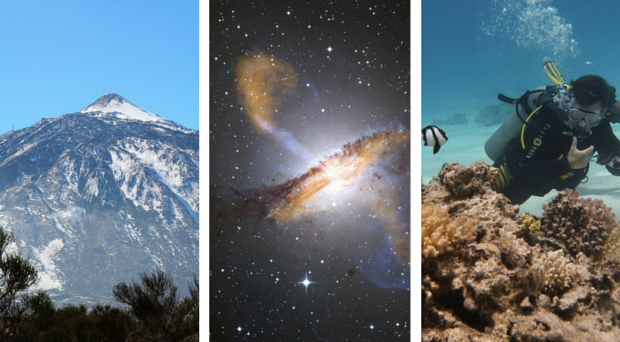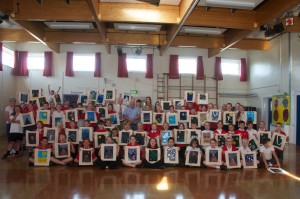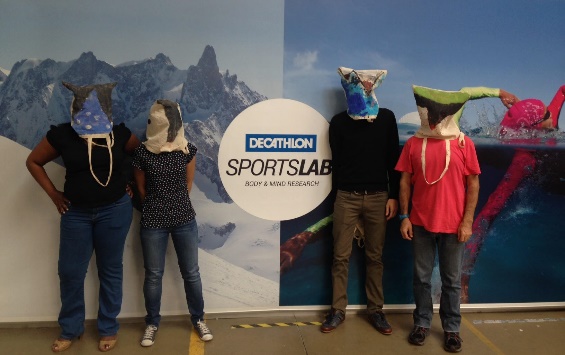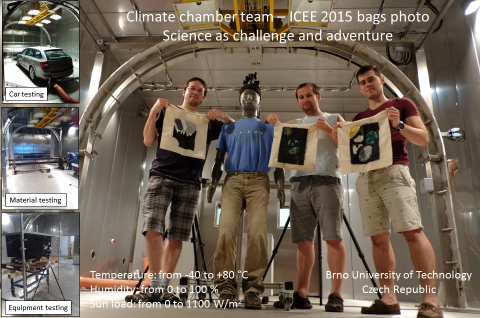
“Why are all the delegates covered in glitter?” I asked myself, arriving at the 16th International Conference on Environmental Ergonomics in Portsmouth a couple of weeks ago. It turned out to be the result of efforts by the conference organisers to engage children in science. Mike Tipton, Jim House and Katie Kennedy, from the Extreme Environments Laboratory at Portsmouth University, answer questions about their ‘conference bags school project’ below.
Ahead of your environmental ergonomics conference, you went to three local schools to tell the children about being a scientist. Can you explain how you involved the children with the conference?
We talked to the children about their view of what scientists were and what they did. Then we demonstrated the typical scientific method by using the simple Newton/apple experiment and asked the children to predict what would happen by voting (the hypothesis), to test this themselves (the experiment), and to report the outcome (the results).
We also explored science as a career for girls, as many of the children considered science a masculine discipline; the fact that the last five young UK scientists of the year were female helped with this.

After a talk about humans in extreme environments, and seemingly never-ending Q&A sessions, we asked the children to draw a picture of an ‘extreme environment’ on a canvas bag we provided for each of them.
The children enjoyed the projects that surrounded the production of the bags and the visit from the scientists. We discovered that when asked to produce a picture of an ‘extreme environment’ most children draw a volcano! Second comes ‘space’ and then diving was the third favorite.
Did you discuss the types of experiments involved in this area of research?
We talked to the children about the experiments we did, how we get volunteers to participate, and why people volunteer to experience uncomfortable conditions in an experiment.
It’s partly because some people want to experience these things, and often people want to challenge themselves. But mostly it’s because when the reasons for experiments are explained, and what we are trying to do to make things better or safer, many people are very keen to help where they can. Volunteering to take part represents them ‘doing their bit’.
Why did you decide to do this and what do you hope to achieve from it?
We had experience of a similar approach at an earlier conference. It seemed like a nice opportunity to:
- Engage local children in science
- Make a link between local school children and our, and other, universities
- Obtain a unique conference bag for each delegate
The sooner children understand that science can be fun and rewarding the better. They are exposed to so much ‘art’ through other media, it was nice to be able to balance things up a bit.
The delegates at the conference thought it was a good idea and have sent messages and pictures about what they do and what it is like to be a scientist. Amongst our favourites so far are:
From Dr Peter Tikuisis, Toronto, Canada:
“If you like the songs of birds, become a musician;
If you like the construction of spider webs, become an engineer;
If you like the cleverness of a fox, become a lawyer;
But if you want to understand all these creatures, become a scientist!”
From scientists at Decathlon’s research facility in Lille, France:

And from Brno University of Technology in the Czech Republic:

How are you following up with the schools?

We are bundling up the messages we receive and sending them to the schools so the children can see them and check out the different websites, understand the global nature of the scientific community, and see how many different and absorbing things scientists do – and all of this in just one narrow area of study!
Abstracts from the conference will be published in Extreme Physiology & Medicine. If you’re interested in reading more research on environmental ergonomics, you can also visit our Journal of Physiological Anthropology.
Comments